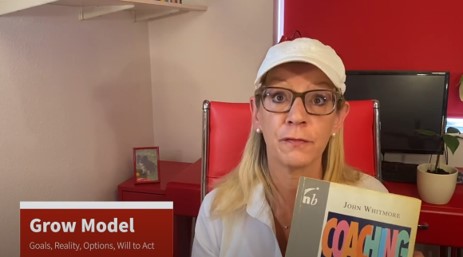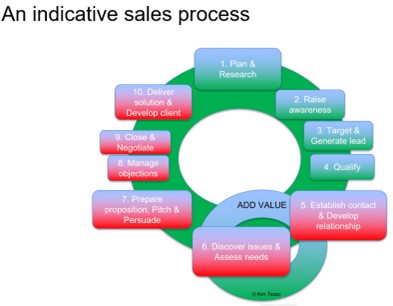
I have produced a 10 minute video on soft skills: Introduction to coaching – Three frameworks. This includes an overview of John Whitmore’s GROW model, the OCM’s SMILE model and the compassionate coaching movement’s Intentional Change Theory (ICT). The video also considers the range of soft skills needed for effective coaching. Soft skills: Introduction to coaching – Three frameworks (Video).
(Video script)
Hi. I’m Kim Tasso and today we will look at what coaching is and you’ll learn about three key coaching models or frameworks which you will be able to apply.
You’ll see that I’m wearing a BASEBALL CAP – now is that because most people think about coaching in terms of sports coaching or am I suffering from a bad hair day under lockdown?
Coaching is a key tool in helping people adapt to change and develop to their full potential. So it’s vitally important at the moment as we all face incredible changes in our work and home lives and a rather uncertain future.
Every leader and manager needs to develop coaching skills to get the best from their people. Coaching is important for training, development, delegation, motivation and change management.
How I became involved with coaching
But let me start with a story…
Long ago, I was working on a consultancy project combining my two professional backgrounds – management and psychology. I was helping to negotiate a collaborative business arrangement between my client which was a psychology consultancy and a leading coaching organisation. I was really interested in what I learned about coaching during that project. So I asked the creator of the coaching company – Eric Parsloe – if I could study with what is now OCM.
Eric had first embraced coaching as a father – with rugby coaching for his son and then when he set up the first multi-media e-learning business – The EPIC Group. I think it was the first such company to get an IPO. He was a member of the European Mentoring and Coaching Council and had written many books on the subject.
To my great surprise and delight, Eric offered to be my personal supervisor if I did the course. That 2001 course and the experience of coaching a team of professional service firm leaders during my training was transformational. You can learn more about my background, qualifications and work in psychology and coaching in this video.
More recently, in my research with lawyers, HR and L&D professionals at law firms for my book on “Essential soft skills for lawyers” – to be published by Globe Law and Business – the topic of coaching arose many times. And during lockdown many people have started to experience the benefits of on-line coaching…
So what is coaching?
There are lots of definitions of coaching….
Eric said “Coaching is a process that helps and supports people manage their own learning in order to maximise their potential, develop their skills, improve their performance and become the person they want to be”
Coaching is a process – It’s different to mentoring. It’s not telling but asking questions and listening to help the person find their own answers
So it’s really good for developing people’s confidence as they create and find their own answers
But you need empathy to be a good coach – to see things from the person being coached’s perspective – not yours. You need to see things from their perspective
Lots of other skills involved including: creating solutions, problem solving, managing performance, teaching and guiding, offering perspective, providing feedback, exploring for information so QUESTIONS & LISTENING are key.
So let’s start with one of the earliest models –
1. The GROW model
(Plant – Frangipani) And a plant is a really good metaphor for this model – this is my third attempt at growing a Frangipani
Probably the best-known model for coaching is by Sir John Whitmore (BOOK – and this is a really simple introduction to coaching)
GROW – Goals Reality Options Will to act
But sometimes people don’t know their goals so I find it’s useful to explore reality first
A similar version is the 4Os: Objectives – Overview – Options – Outcome
2. The SMILE model
At OCM I learned and applied with Eric the SMILE method (Smile toy belongs to Bert – I can’t get him to demonstrate it right now as he’d run away with it)
SMILE – Self Managed Integrated Learning.
There are four stages to this model too…
1. Analyse for self-awareness
2. Plan for responsibility
3. Implement using assessment, styles, techniques and skills training
4. Evaluate success
People learn in different ways – there’s lots of material on learning styles
We go through lots of emotions as we tackle change – I prepared a short video on the emotions we experience through change – It’s not surprising when you lean that we act on habit 70-90% of the time
There’s another SMILE model – from Sandra Retzer in China
• Set up the agenda
• Measure and motivate
• Inspire the vision
• Let go of emotions – Learn the lessons
• Express through action
Gabriele Oettingen developed a strategy for mental contrasting called WOOP. (Wish, Outcome, Obstacle, Plan) This relates to the idea of mental contrasting: optimists and pessimists. Those that combine a positive view of the future with an understanding of the obstacles and barriers are most successful
How you think about the future impacts cognition, emotion, and behaviour.
3. Intentional Change Theory
The most recent model in ICT – Intentional Change Theory (I’m using a warm heart shaped hot water bottle here as it is described in a book as compassionate coaching – Book cover)
This is the 2019 book called “Helping people change – Coaching with compassion for lifelong learning and growth” by Richard Boyatzis, Melvin Smith and Ellen Van Oosten.
It’s based on neuroscience and is evidence-based. I wrote a review of this book a short while ago if you’d like to learn more
The authors define coaching as “a facilitative or helping relationship with the purpose of achieving some type of change, learning or a new level of individual or organizational performance”.
They stress the need for positive energy – to focus on strengths not weaknesses
They also show that the desire to change must outweigh obligation to change
The authors outline the stages of their Intentional Change Theory (ICT) (Slide)
1. Identify the ideal self and personal vision
2. Explore the real self – both strengths and weaknesses
3. Establish a learning agenda
4. Experiment with and practice new behaviour
5. Maintain resonant relationships (based on mindfulness, a positive emotional tone, the arousal of hope, an authentic connection and compassion) and social identity groups
On that High Quality Connection (HQC) connection
This links to Humanistic approach in psychology and counselling/therapy theory – It means that to be an effective helper you must follow three principles:
• Empathy
• Congruence
• Universal Positive Regard
Humanists believe that people naturally self-actualise but sometimes get stuck – Imagine a plant. It wants to grow – but sometimes it gets stuck. In coaching we try to help people become unstuck so that they can grow and reach their full potential
Of course, there’s much more to coaching. In 2017 reviewed a book with over 70 coaching models (BOOK)
And qualified coaches draw a lot on Positive Psychology
Thanks for watching
“It’s training Kim but not as we know it”
Related videos on professional and personal skills
Emotions when reacting to change
Working with different personalities
Coaching and mentoring books
Introductory coaching and mentoring books
Book Review: The Coaching Manual by Julie Starr – Kim Tasso July 2024
A complete guide to effective mentoring (kimtasso.com) September 2024
Book review: Coaching skills: A handbook by Jenny Rogers (kimtasso.com) June 2022
More advanced coaching and mentoring books:
The Fertile Void – Gestalt coaching at work by John Leary-Joyce (kimtasso.com) August 2024
Transformational Mentoring – creating developmental alliances (kimtasso.com) July 2024
Neuroscience for learning and development by Stella Collins (kimtasso.com) September 2023
Helping people change: Coaching with compassion (kimtasso.com) October 2019
Coaching models – book review of Stephen Gribben’s book (kimtasso.com) August 2017
Other books and some coaching qualifications are listed here: Coaching and consulting skills for M&BD workshop (November 2021) (kimtasso.com)
Organisational and cultural change books:
Book review: The Thriving Lawyer by Traci Cipriano (resilience) (kimtasso.com) June 2024
Neuroscience for learning and development by Stella Collins (kimtasso.com) September 2023
Book review: Neuroscience for organizational change by Hilary Scarlett (kimtasso.com) May 2020
Change management – Change Catalyst book review by Kim Tasso September 2018
change management and organisational change (kimtasso.com) January 2017 “Making sense of change management: A complete guide to the models, tools and techniques of organisational change” by Esther Cameron and Mike Green
Classic management book reviews – The McKinsey way, Good to great (kimtasso.com)
Coaching and mentoring skills articles
Advanced Coaching – Expectations and Challenges – Kim Tasso January 2025
Meaningful Mentoring with Andy Lopata – Kim Tasso October 2024
How to coach teams with Jamie Butler – Kim Tasso October 2024
Business Development Coaching Insights – Kim Tasso September 2024
fixed views and closed to new ideas (dealing with stubbornness) (kimtasso.com) July 2024
How do you choose a therapist? – Kim Tasso July 2024
You’re not listening – What you’re missing (kimtasso.com) June 2024
Change Management – Ted Lasso leadership lessons, emotions (kimtasso.com) May 2024
Coaching and Consulting – People and Problem-Solving skills (kimtasso.com) February 2024
Why are questions so important? (Questioning skills) (kimtasso.com) February 2024
What is Socratic questioning? (Questioning skills) (kimtasso.com) February 2024
Learning & Development Update: Lean Learning (kimtasso.com) October 2023
Coaching and Consulting skills – Limiting beliefs, approaches to helping (kimtasso.com) February 2023
Don’t jump to conclusions – Coaching and Consulting skills (kimtasso.com) February 2022
Coaching and consulting skills for M&BD workshop (November 2021) (kimtasso.com) November 2021
Active Listening (Video) (kimtasso.com) November 2020
Book launch: Essential soft skills for lawyers – some research findings (kimtasso.com) July 2020
Soft skills: Introduction to coaching – Three frameworks (kimtasso.com) June 2020
Boost business development success with coaching (kimtasso.com) February 2020
12 thoughts on delegation, coaching and team management (kimtasso.com) January 2020
The art of giving feedback – top tips (kimtasso.com) June 2018
Emotional contagion, delegation, coaching and team meetings (kimtasso.com) January 2018
Delegation for leaders – a how to guide (kimtasso.com) August 2017
Coaching skills – the power of questions (kimtasso.com) May 2017
coaching and mentoring skills (kimtasso.com) December 2015
Before your set your goals – check your limiting assumptions (kimtasso.com) January 2015
Coaching skills – the importance of active listening – Kim Tasso November 2014
Seven takeaways from a coaching skills course (2014) – Kim Tasso November 2014
Personality assessment as part of the coaching and development process (kimtasso.com) June 2013








